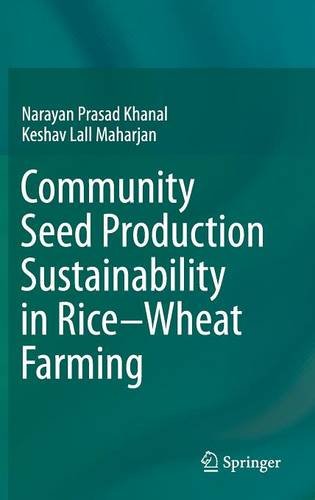

Most ebook files are in PDF format, so you can easily read them using various software such as Foxit Reader or directly on the Google Chrome browser.
Some ebook files are released by publishers in other formats such as .awz, .mobi, .epub, .fb2, etc. You may need to install specific software to read these formats on mobile/PC, such as Calibre.
Please read the tutorial at this link: https://ebookbell.com/faq
We offer FREE conversion to the popular formats you request; however, this may take some time. Therefore, right after payment, please email us, and we will try to provide the service as quickly as possible.
For some exceptional file formats or broken links (if any), please refrain from opening any disputes. Instead, email us first, and we will try to assist within a maximum of 6 hours.
EbookBell Team

0.0
0 reviewsThis book analyzes the sustainability of community seed production under a rice–wheat farming system from microeconomic perspectives, considering how seed producers benefit from community seed production and how those benefits continue into the future. Seed producers’ performance in resource management, governance and marketing strategies indicates current benefits, whereas soil conservation and risk-management practices provide the basis for future benefits. Community seed production is a local-level seed management system owned by farmers. This system provides the institutional mechanism to supply diversified seed demands of open-pollinated varieties of food crops in a cost-effective way in rural regions. Being able to address the concerns of food insecurity, poverty, climate stress and biodiversity loss in programs and policies of development agencies, community seed production is gaining popularity among the farmers and the policy makers in developing countries.
This book discusses the issues of organizational governance of the community seed producers’ groups and links them with household-level benefits to understand the organizational dynamism and the probable development paths of such organizations in the future. It also highlights the necessity to institutionalize lessons learned in community seed production in the stakeholders’ programs and policies. These understandings provide a basis for formulating policies for strengthening the system in developing countries. Students, researchers, policy makers and donor agencies working with CSP in the developing world will find this book useful in broadening their understanding of CSP in general and its sustainability in particular.